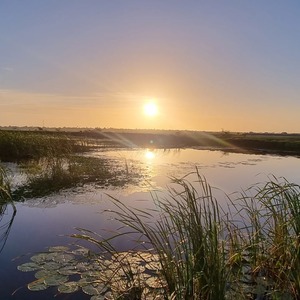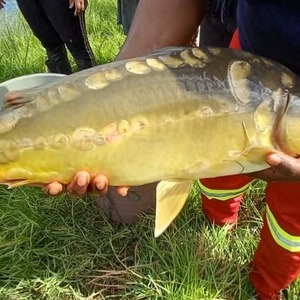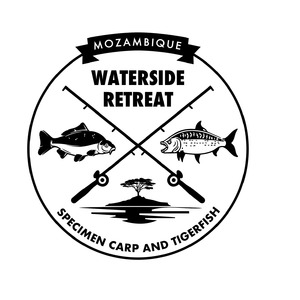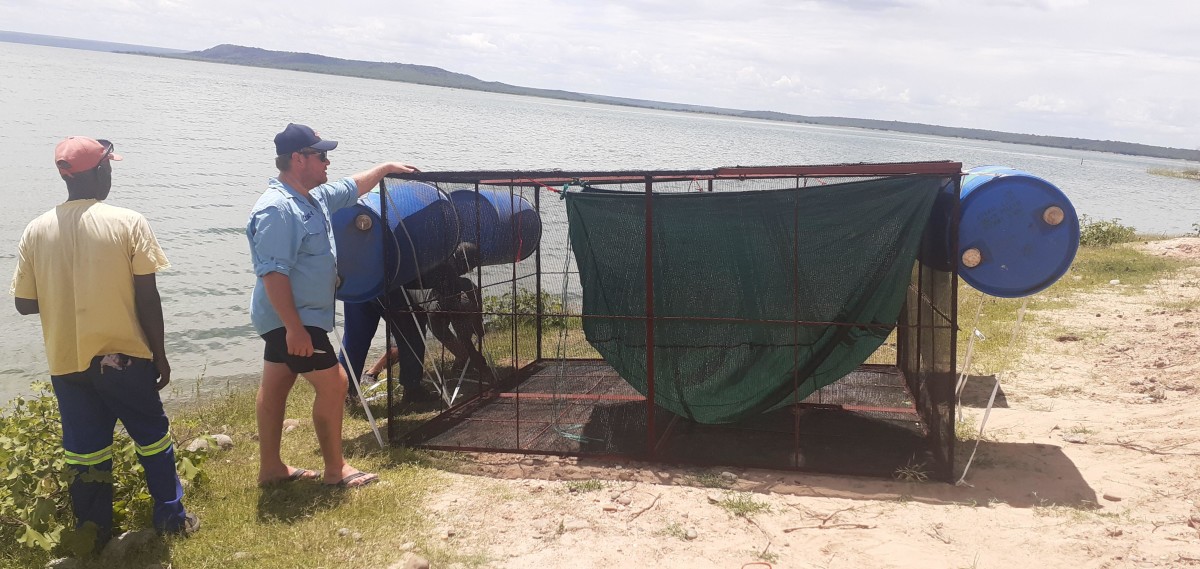
An African Adventure | Part 3
A story of a fishery, where no fishery has been before | Part 3
As 2021 turned into 2022, our efforts to stock Tigerfish were faltering. In half a year, we had managed to release only a meagre 30 fish into the larger dam. We had a 12-acre dam to stock with one of Africa’s most sought-after freshwater game fish, and we also needed to populate the carp dam with these incredible predators to ensure it didn’t get overrun with smallies. Our goal was to stock 300 Tigers in total, and you don’t need to be a maths professor to calculate how long this was going to take at our current pace. A rethink and a new plan of action were definitely necessary!
One weekend, I was given the contact number of a lodge owner’s son, where I had stayed at the massive dam (over 37,000 acres) and had the immense pleasure of catching some small Tigerfish. He informed me he was due to visit on the 14th of January and that he could easily catch between 50 to 100 Tigerfish a day. 50 to 100 a day?! I couldn’t believe what I was hearing, but he was adamant that these were his regular catches. He also said he was happy to take us out fishing over that weekend, proudly stating that he could guarantee 200 Tigerfish!
Plan A was failing—could this be Plan B? The logistics involved would be significant, to say the least. If all went to plan, we’d need a big truck loaded with a generator to aerate a couple of large water tanks, each holding a few tons of water, hopefully filled with loads of healthy, live Tigerfish. Even with a decent vehicle, the drive would take a good 3 hours, meaning the truck could take in excess of 5 hours. On top of that, these fish are incredibly sensitive and highly susceptible to ‘karking it’ if they become too stressed.
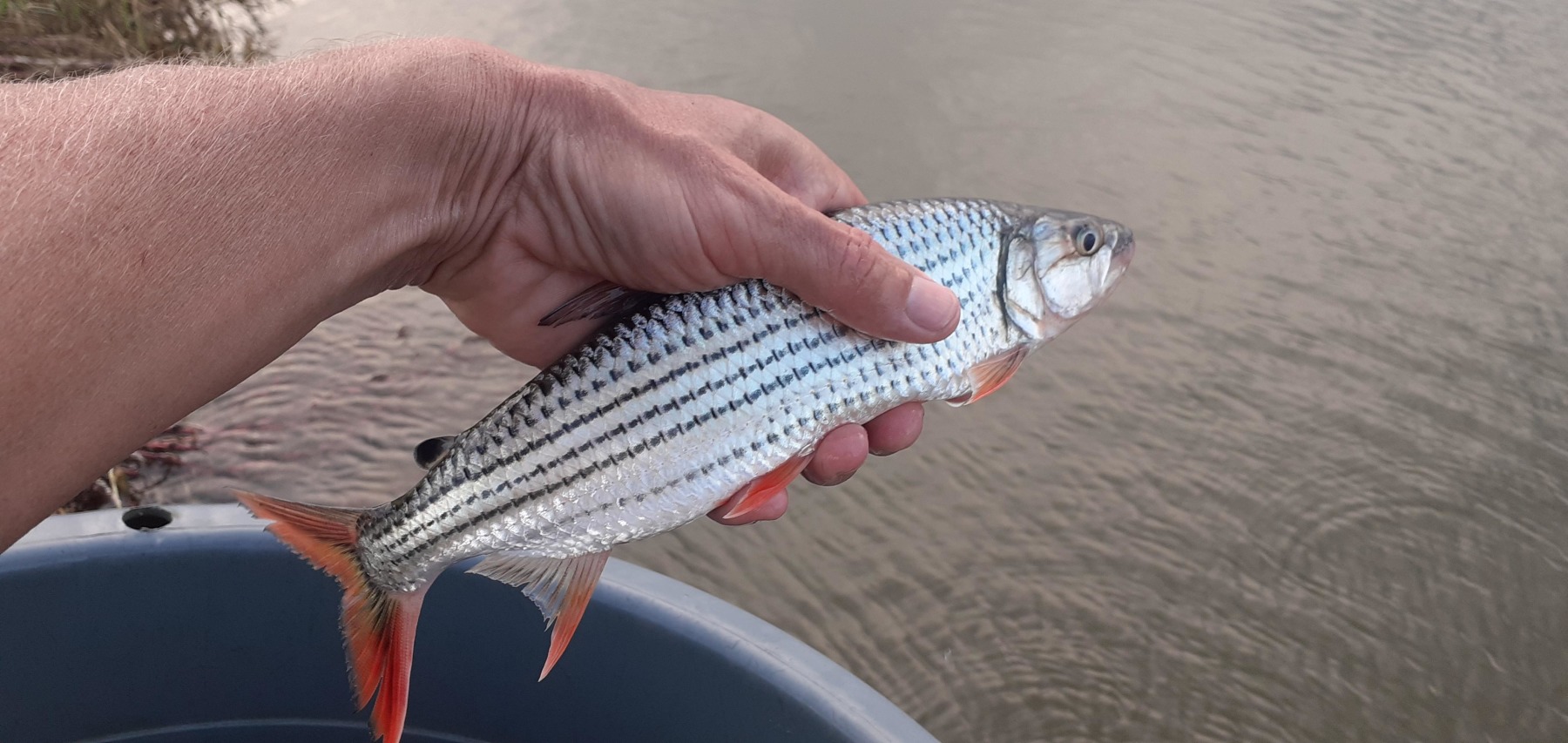
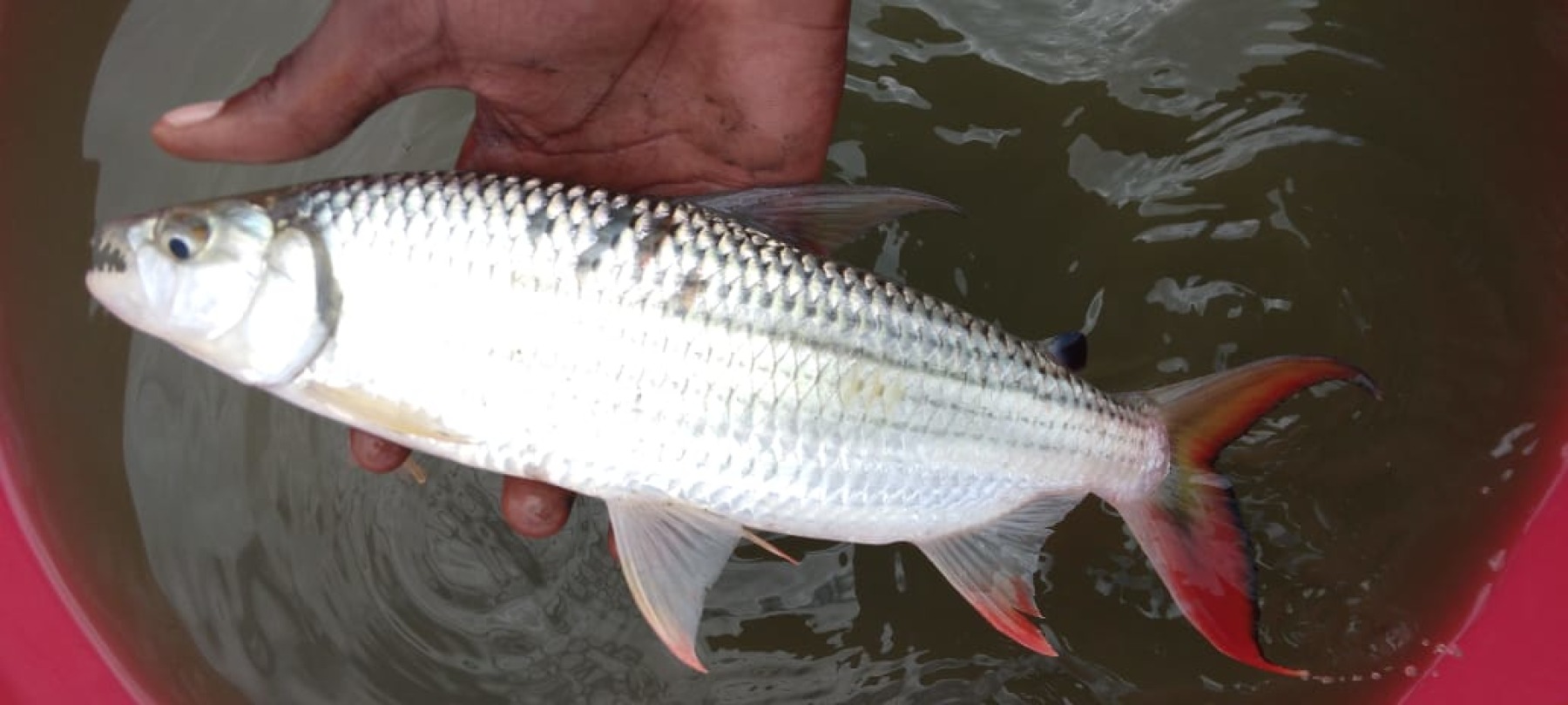
We had to consider the ethics of the situation, as none of us wanted a fish massacre on our hands just because we thought we had a great idea. Then Piet’s brother sent through a fisheries document from Australia about transporting live fish, and amongst its pages, we found something that we all agreed might just make this crazy scheme work!
The use of netted cages attached to the side of boats is an extremely successful method for keeping catches live and healthy. By immediately transferring the caught fish into the cages, the stress on the fish is very limited and quick. The fish remain in their natural water inside the cages, and the through-flow of water means there is never a build-up of toxic ammonia or a lack of oxygen. This method was exactly what we needed, and now we were all happy for Operation ‘Tigers R Us’ to proceed.
In the days leading up to Operation ‘Tigers R Us,’ Jack from the farm got busy adapting two 5,000-litre water tanks for transferring the fish, including making ring blowers for aeration and installing fitted nets inside the tanks for quick and easy removal of the fish. A generator was secured to the truck’s flatbed, along with the tanks and air pipes. Meanwhile, before our arrival, the lodge owners were busy building a 3m x 3m x 1.5m deep floating cage. This solid structure would be covered in shade netting, with two separate nets hung inside to hopefully reduce the chance of predation by the giant crocodiles and massive Tigerfish that called the dam home. The cage would be fitted with four 200-litre drums as flotation devices and would be afloat in the dam when we arrived on the afternoon of the 14th.
"A huge 4m-plus crocodile that surfaced no more than 20 metres away from where Jack had been wading in the margins just 15 minutes ago!"
Four of us set off to the dam just after lunchtime on Friday. The plan was to only send the truck up on Sunday afternoon, and we would transfer our abundant catch of Tigers to the truck around 4 a.m. on Monday. I was buzzing; everything was planned, prepared, and we were on our way to solve this huge stocking challenge. We had bets in the car about how many Tigers we were going to catch, and I put my money on 200-plus. Slightly concerningly, Piet said he’d be very surprised if we even got 50. Shame on him, I thought! This was going to work, and positive energy brings about positive results.
We arrived at the lodge just after sunset, having stopped for a bit of late lunch and a couple of cold ones along the way. The setting was spectacular; the African skies never disappoint with their evolving colours as the sun dips beyond the horizon. We were finally here, and everything was in place to make this happen. The evening’s conversations around the fire about the dam’s giant Tigerfish, along with the countless smallies we were going to catch, made the beers go down even smoother than usual.
My alarm awoke me from my fishy dreams at 4:30 a.m., and within half an hour, we were launching the fishing boat, ready for a day’s adventure. The only problem was, there was no floating cage to put the fish into! The lodge owner’s son explained that we shouldn’t worry; it would be ready by lunchtime. Lunchtime?! Why wasn’t it in the water already, and why wasn’t this mentioned last night?! I didn’t want to upset anyone at this point, but we had made huge efforts to get our side ready for this weekend, and this wasn’t an ideal start! Then, as the sun began to rise in the east, something else caught my attention that wasn’t ideal, to say the least. The water was the colour of pea soup! The algal bloom present in the water certainly wasn’t going to help us catch Tigers with small spinning lures. I began to think Piet might have known something I didn’t, and he was more than likely going to win our bet.
The morning’s fishing was slower than we had hoped, but the only favourable thing was that we didn’t even have a place to put the fish into anyway! Around 11:30, we got the call that the cage was ready and at the water’s edge. Finally, some good news, and we motored back to shore. Upon arrival, it was clear that their ‘ready’ wasn’t exactly the ‘ready’ we had agreed upon. There were no flotation drums attached... I had a sinking feeling now. Anyway, all we could do was suffer under the midday African summer sun and fix the four drums to the cage.
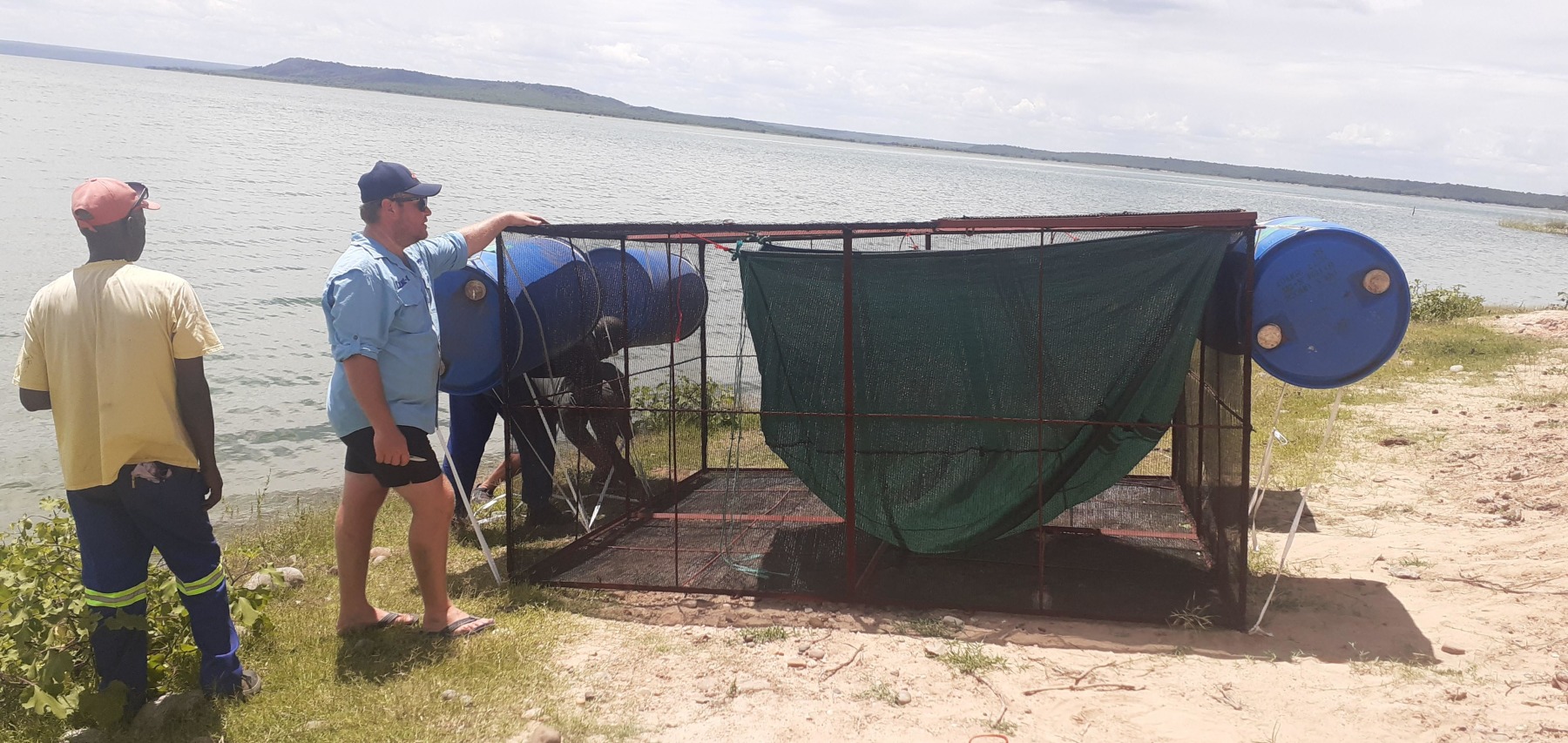
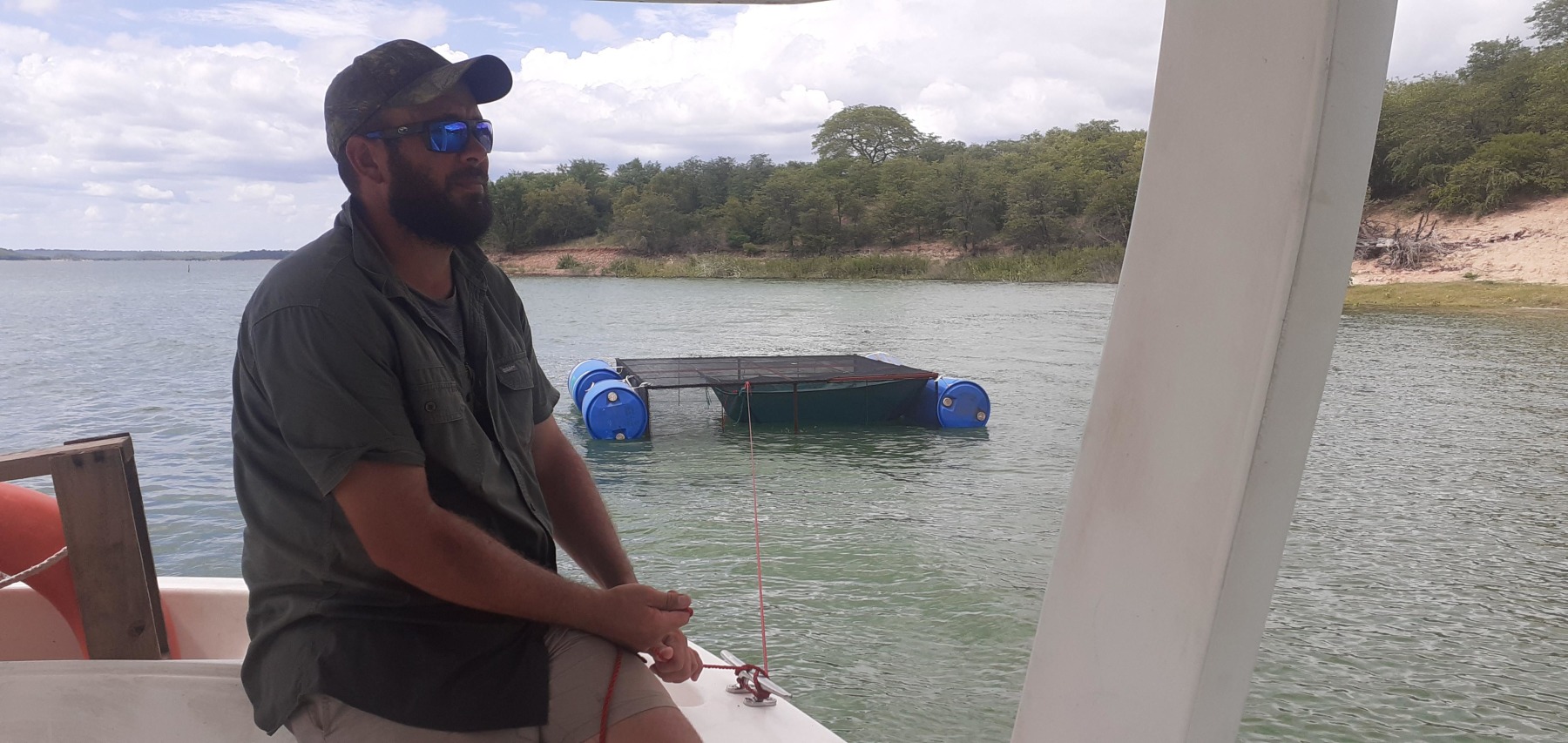
Patience was somewhat thin at this point, and when our first attempt to launch the cage into the water resulted in two drums coming loose and the cage nearly sinking, a couple of heated exchanges ensued. Jack waded waist-deep into the dam to help drag the cage out, and even the water did little to cool his temper! A quick re-tie of the drums and the cage was finally floating nicely on the water’s surface. So too was a huge 4m-plus crocodile that surfaced no more than 20 metres away from where Jack had been wading in the margins just 15 minutes ago! Africa is not for the faint-hearted.
We headed back out into the dam, now in the early afternoon, with nothing to show for our efforts. Eventually, I hooked and landed a small Tigerfish, and at last, we had a cage to put it into. I quickly unhooked it in the landing net and admired this wonderful fish. Maybe this was going to work after all; it wasn’t the start we were expecting, but we had a live Tiger ready for the cage. I dragged the landing net towards the cage still in the water, as I didn’t want to stress the fish by lifting it out of the water. Then, much to my shock and surprise, it lifted itself out of the water by jumping straight out of my net and back into the dam!
To cut a long story short, we fished the rest of Saturday and most of Sunday without even a bite! To say the weekend failed to meet our, or maybe my, expectations would be an understatement. The return journey that Sunday evening felt ten times longer than the route we had driven just two days earlier. What a disaster! With so much time, effort, and money put into it by the team, I was gutted. Sweet FA was the result of our endeavours. I just couldn’t see anything constructive that we’d learned from this mission. We returned empty-handed, but the pressure to stock the dams with Tigerfish was now heavier than before. Both Plan A and Plan B had failed; that was the reality I faced, and I honestly didn’t know what to do next.
Back at the fishery, another issue was growing—quite literally. The carp dam had been filled with water about six months ago, but now about 75% of its surface had shoots of grass protruding vertically into the air, rendering it almost impossible to fish. I needed to find out exactly what depths we had where this grass was growing, so on the last Sunday of January, I decided to get in and find out.
I asked Jack to keep an eye out for me, as we knew a crocodile had been spotted recently in the far corner of the dam. I was heading into the middle of the dam, so I was chilled about getting wet, plus I had a metre-long stick with me so I could prod the bottom as I moved further into the dam. I’d left my phone with Jack to take pics showing where the water was coming up to on my body so we could see what was going on. Most of the water was between waist- to chest-deep, and at around 50 metres out, I turned to face him again for another pic. It was at this point Piet joined Jack and jokingly commented that this might be the last time we see Dave Charley!
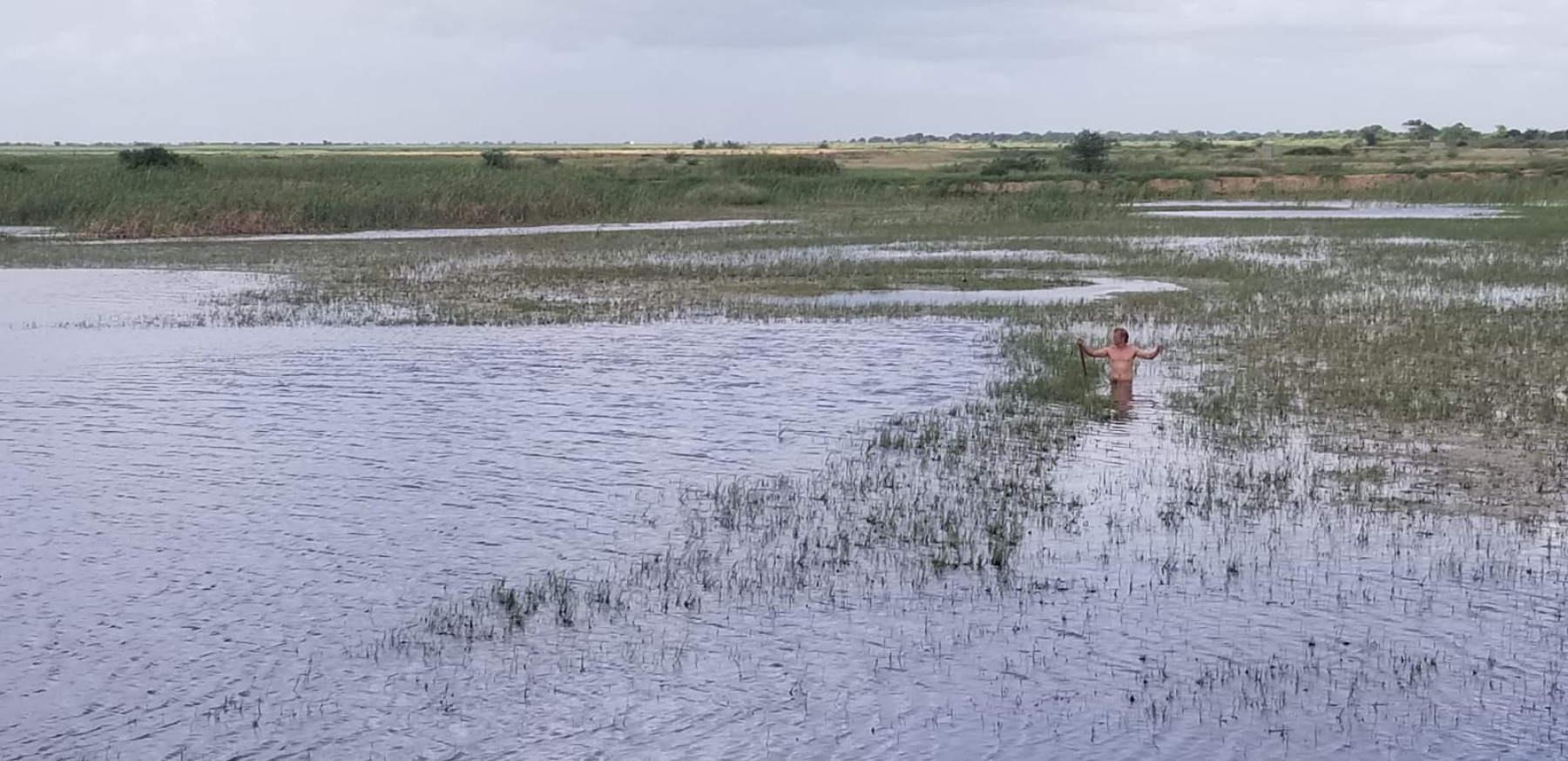
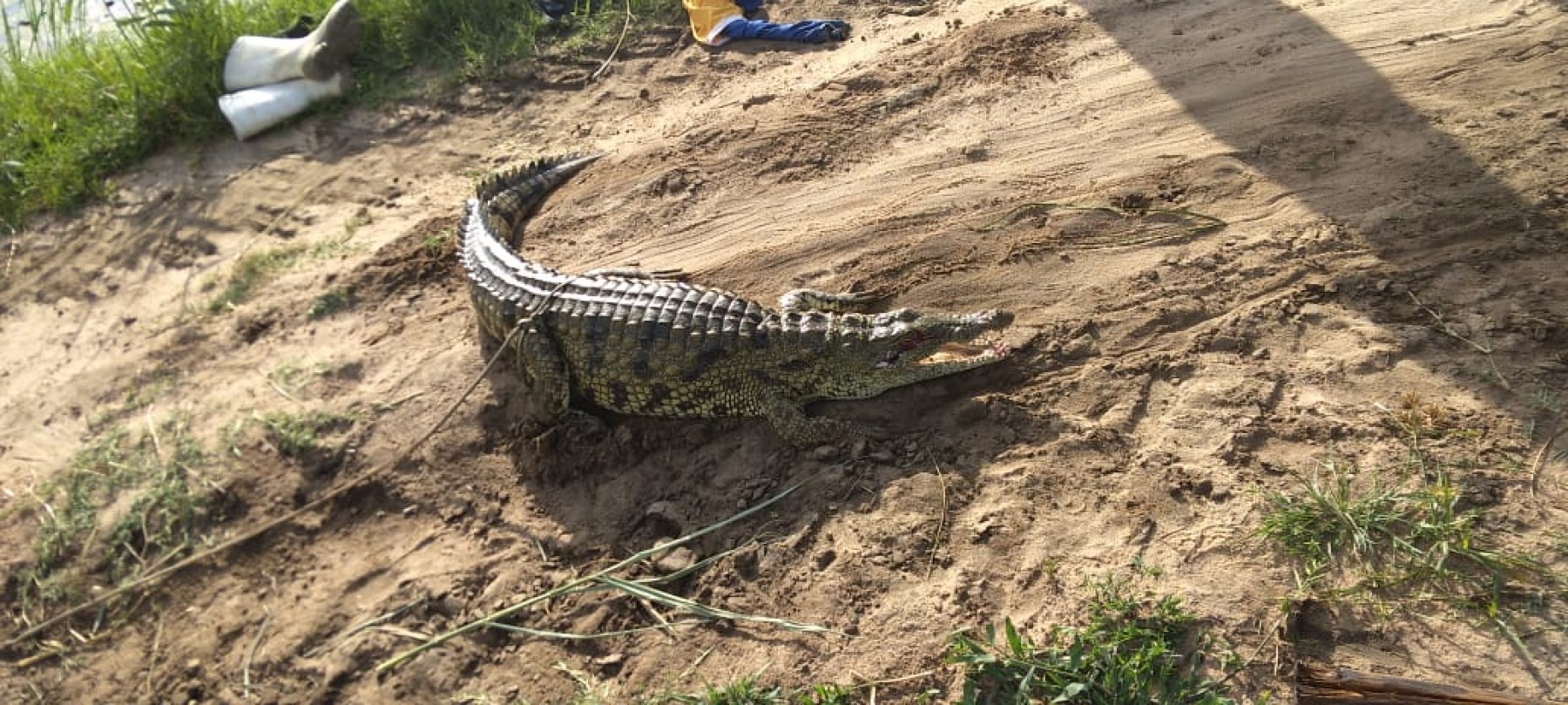
Apparently, Piet hadn’t even finished his sentence before Jack suddenly started screaming at me! I shouted back that he better not be f*#king around, but he seemed quite agitated and loud in his reply that he wasn’t. I turned to check my surroundings and, in a clearing about 15 metres away, saw a huge swirl as a croc’s tail slapped the water’s surface and disappeared. Bollocks!
I was almost chest-deep in water and around 50 metres from the bank, with a crocodile in very close proximity! In all the fishery management documents I’d studied, nothing was ever mentioned about what to do in this kind of scenario. I genuinely don’t remember the following moments clearly, other than running/wading for my life through the weedy water in front of me. I do remember jabbing my trusty stick aggressively into the water behind me, though that probably wouldn’t have done much! Piet swears he saw another swirl and to this day is adamant that it was following me. Jack came down to the water’s edge to help pull me out, and I was so relieved to find myself safely back on terra firma. I’d just done my best aquatic Linford Christie impression, and I was alive and in one piece.
Two days later, the guys at the farm managed to safely trap the crocodile, which measured an impressive 2.7 metres, and it was released into a nearby river in a very remote area. A happy ending to what could have been a disaster... safety should never take a day off!
Let’s just say 2022 wasn’t exactly going to plan, and I won’t be wading out again if there’s any chance there might be a croc in the water—better to stick to a marker rod and float!
However, there are always positives. Although I’d had a month to forget, the carp were growing incredibly, with many already exceeding 2kgs, even though they were only a year and a half old! Plus, the fishery was starting to mature and look amazing. Now I just needed to find the solution to stocking the Tigers!
*Part Four of an African Adventure to follow soon...*
Dave Charley: WhatsApp: (+258) 845901250. Email: watersideretreatmz@gmail.com




